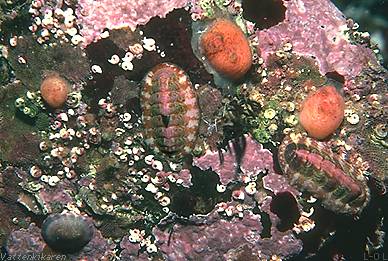 |
|
The
grazers, like the predators are also useful, as they help to keep the algae
free from secondary growth. This secondary growth has certain disadvantages
for the host; weighs down the algae; stops the penetration of light; impairs
the absorption of nutrients from the water; it also increases the friction
against the water so that they are more easily torn away from the substrate.

Energy and the flow of material
After size, the most dominating habitats are
the free masses of water (pelagial) and the ocean bottoms, that for the
most part are composed of soft sediment. Cliffs and rocky beaches constitute
only a small fraction of Marine habitats because the coastal zone is comprised
of a thin strip between the land and sea. The total weight of those organisms
living on cliffs and rocky beaches is only a small fraction compared to
that of those organisms that are found in the pelagial waters and on soft
bottoms.
 |
Page 47 of
52 |
 |
|



